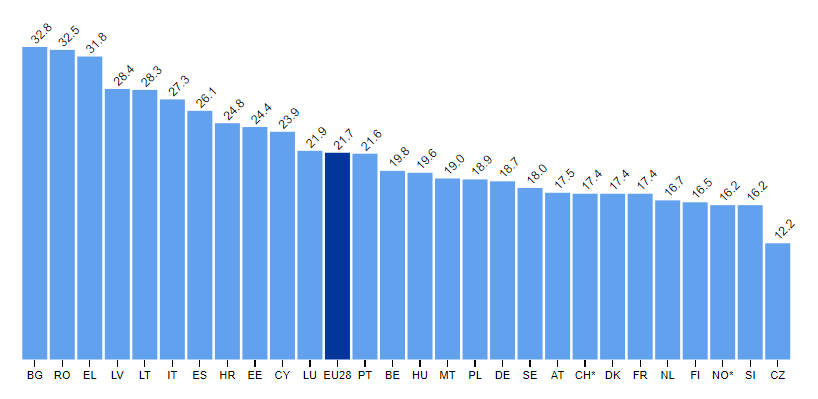The euro area annual inflation rate was 1.2% in February 2020, down from 1.4% in January. A year earlier, the rate was 1.5%.
Statistics
Directive 2012/27/EU aimed to improve energy efficiency by 20% by 2020 compared to 1990 levels and included a requirement for all EU countries to set national energy efficiency targets to achieve t
Twelve Member States have reached a share equal to or above their 2020 target.
Hourly labour costs rose by 2.6% in the euro area and by 3.1% in the EU28 in the third quarter of 2019, compared with the same quarter of the previous year.
The value of gross domestic product (GDP) per inhabitant in purchasing power standard (PPS) of EU regions generally fell in 2009 because of the crisis.
The fight against poverty and social exclusion is at the heart of the Europe 2020 strategy for smart, sustainable and inclusive growth.
In 2018, for graduates aged 20-34 in the European Union who had attained a tertiary level education within the previous three years, the employment rate stood at 85.5%.
According to a first estimation of annual growth for 2018, GDP grew by 1.8% in the euro area and 1.9% in the EU28.
The euro area (EA19) seasonally-adjusted unemployment rate was 7.9% in December 2018, stable compared with November 2018 and down from 8.6% in December 2017.
Euro area real growth of household income and consumption per capita, % (seasonally adjusted)









